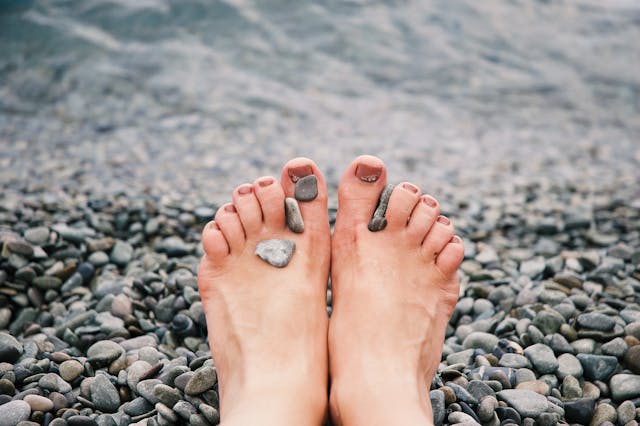Have you ever had Corn on soles..? It’s often so painful. Corns and calluses are tough thickening of the outermost layer of the skin that is frequently subjected to friction, like the skins of our soles or palms. They most often develop on the feet and toes or hands and fingers. Corns and calluses are not the same thing.
Corns- Corns are small lumps of hard skin.
Corns are smaller than calluses and have a hard centre surrounded by inflamed skin. The hard part at the centre of the corn resembles a barley seed that is like a funnel with a broad raised top and a pointed bottom. Because of their shape, corns intensify the pressure at the tip. Corns tend to develop on parts of your feet that don't bear weight, such as the tops and sides of your toes and even between your toes. They can also be found in weight-bearing areas. Corns can be painful when pressed.
Calluses
Calluses are larger patches of rough, thick skin. Calluses are rarely painful. They usually develop on the soles of your feet, especially under the heels or balls, on your palms, or on your knees. Calluses vary in size and shape and are often larger than corns.
Risk factors
Patients of medical conditions such as diabetes, rheumatoid arthritis and obesity leading to poor blood circulation in the feet, are at greater risk of complications arising from corns such as bleeding and infection>
Causes
Pressure and friction from repetitive actions cause corns and calluses to develop and grow. Some sources of this pressure and friction include: Wearing ill-fitting shoes. Ill fitting shoes and high heels, Presence of second toe longer than first toe. Skipping socks. Wearing shoes and sandals without socks can cause friction on your feet. Playing instruments or using hand tools. Calluses on your hands may result from the repeated pressure of playing instruments, using hand tools like in carpentry & jewellery making or even writing for long hours.
Treatment
Popular method is to use a Corn Cap, a felt ring with a core of salicylic acid that relieves pressure and erodes the hard skin. However, if an abnormal pressure source remains, the corn generally returns. If no other treatment is effective, surgery may be performed.
Homoeopathic Treatment for Corn & Calluses –
Homeopathy on the other hand, offers a safe gentle and long term cure. Painless and effective homoeopathic treatment involves only oral medicine in the form of pills. Only external applications are prohibited in Classical Homeopathy. Corn can be totally and permanently cured only by homeopathy. Corns tend to reappear and there can be multiple corn formation so you must treat and cure the tendency of corn formation with the help of classical homoeopathic medicines and right foot care. Not only does it sidestep a painful and expensive procedure, but it assures a permanent cure. Corns do not recur once treated with Homeopathy.
Apart from Homoeopathic Treatment, certain simple precautions should be taken for existing corns and to prevent them from developing.
Wear shoes that give your toes plenty of room. Use protective coverings. Wear Socks. You can also try toe separators. Wear padded gloves when using hand tools. Or try padding your tool handles with cloth tape or covers. Moisturise your skin properly.
Soak the affected area in warm water.